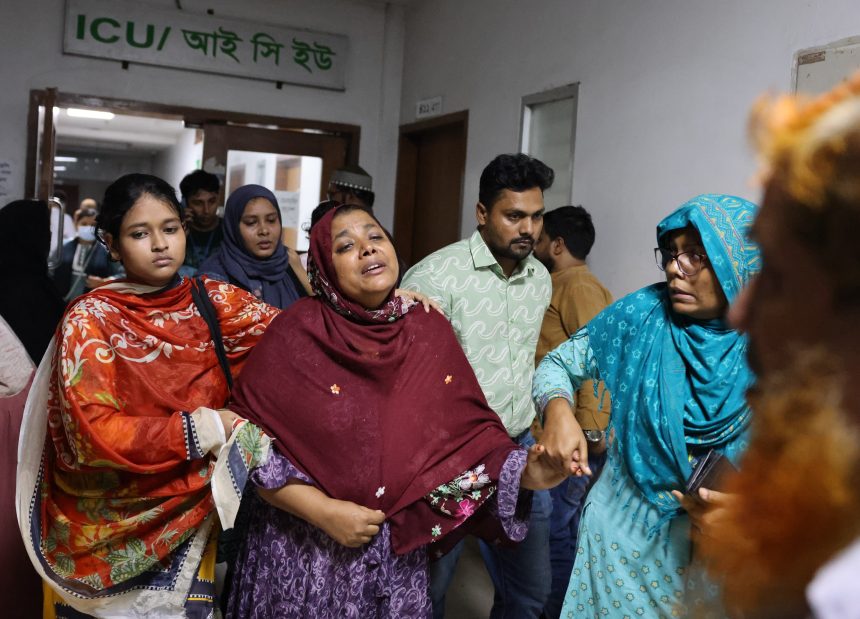It was all seeming like a blur. The air around the National Institute of Burn and Plastic Surgery was thick with grief and urgency.
Ambulances with sirens wailing came screaming in and out throughout the day, their red lights cutting through the heavy atmosphere like a warning beacon of tragedy.
The rhythm of chaos pulsed endlessly as paramedics, doctors, and nurses rushed to and from the emergency area.
Guardians and relatives of the burn victims from the horrific plane crash incident—most of them still in shock—were seen running around frantically, their faces painted with dread, uncertainty, and exhaustion.
Some were searching desperately for blood donors, clinging to prescriptions in trembling hands, dashing from one counter to another with urgency written across their faces.
Others were hurrying to buy coconuts, packets of saline, and light snacks—not for comfort, but to keep their loved ones and themselves from collapsing amid the unrelenting tension.
Amid all this chaotic rush and despair stood a young man—his eyes hollow, his movements restless, and his face blank with distress.
He was searching for a third-grade girl named Afiya.
He seemed absent-minded, and real thirsty, functioning purely on instinct, moving from here to there in the NIBPS, fueled only by a fragile hope.
The young man, Alvi, introduced himself as a family friend of Afiya’s.
Alvi said that ever since the accident, Afiya has been missing.
“Despite searching in various hospitals across the city, including all those in Uttara, the family has yet to find a single trace of her. Her name appeared on no hospital’s admission list.”
Alvi muttered under his breath that the family is still clinging on to the hope that she will be found soon.
In the waiting areas and on the cold hospital floors, those who were not rushing or running simply sat in silence, eyes staring into nothingness.
The corridors echoed with the soft sobs of grieving parents and the whispers of silent prayers.
Some kept weeping in helplessness.
Among them was Saleha Naznin, mother of seventh-grader Musabbir Makin, a student of Milestone School, who had suffered over 62 percent burns and was now battling for his life in the ICU.
Tears streamed down her face and she continued to whisper prayers under her breath.
“I sent my son to school on Monday because there was no higher secondary examination that day,” she said, trying to hold back her sobs.
“It’s very difficult for me to manage both of my sons during exam periods. One of them is attending HSC this year. That day, I reached the school a little late… just moments before the incident. The school day had just ended. I saw the whole crashing happen right in front of me—right before my eyes,” she recounted, her voice breaking.
“Please… please pray for my son,” she pleaded, her body trembling with every word.
In this sea of despair, however, there was a faint glimmer of hope visible on some faces.
Among them was Sazzad Hossain, uncle of fourth-grader Hafsa.
Unlike many other victims, Hafsa had survived with 30 percent burns and had shown signs of recovery.
“She’s been talking to us since today,” Sazzad said, trying to smile through the pain.
“She is still under close observation, and though the doctors haven’t given a timeline for her release, her condition is a bit more stable compared to some of the other students.”
The hope in his eyes was fragile, yet precious—like a candle flickering in a storm.
As the day stretched into evening, the hospital’s corridors remained crowded, the smell of antiseptic mixing with the smell of sweat, tears, and uncertainty.
The cries of the grieving and the murmur of prayers continued, as families held on—some to hope, some to memories, and others to just the last thread of strength left in them.


